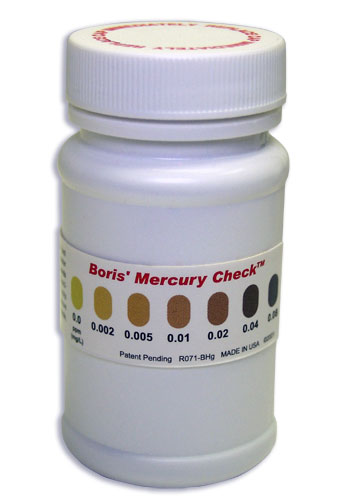A while back we wrote a blog entry about widespread mercury pollution in water in Thirld World Countries because of irresponsible mining practices. This time we bring bad news about the mercury pollution a great number of the waterways right here in the United States!
LOS ANGELES (Reuters) – Scientists have detected mercury contamination in every one of hundreds of fish sampled from 291 freshwater streams, according to a U.S. government study released on Wednesday.
More than a quarter of those fish contained concentrations of mercury exceeding levels set by the Environmental Protection Agency for the protection of people who eat average amounts of fish, the U.S. Geological Survey report said.
More than two-thirds exceeded the EPA-set level of concern for fish-eating mammals. ( source )
You read that correctly. 100 PERCENT of the fish sampled from 291 freshwater streams in the United States tested positive for the presence of mercury and more then 66 percent of those fish contained quantities of mercury which exceed levels which may harm fish-eating mammals (beavers, otters, bears, etc.).
Oh, and a mere 25 percent of the fish contained mercury levels exceeding safety limits for humans who eat fich on a regular basis.
Where did the mercury come from?
Scientists believe coal burning power plants account for the greatest amount of mercury found in the United States waterways. Particles of mercury enter the atmosphere and fall back down towards the Earth. Some get blown great distances by wind and others enter the Earth’s system of waterways and travel wherever the currents want to take them.
Where were the highest mercury counts found?
Naturally people, and this includes people who eat fish AND people who don’t eat fish but still have general concerns about the quality of water in their surroundings, want the answer to that question, so…
Some of the highest levels of mercury in the latest study were found in the coastal “blackwater” streams of North and South Carolina, Georgia, Florida and Louisiana — relatively undeveloped areas marked by abundant pine forests and wooded wetlands.
USGS hydrologist Barbara Scudder said those characteristics somehow enhance the conversion of mercury from its inorganic form in the atmosphere to a more toxic organic form, methylmercury, which accounts for at least 95 percent of the mercury found in fish.
…
High concentrations also were found in some streams in the West fed by areas where mining had taken place, Scudder said. ( source )
Should people stop eating fish from US streams?
Some people think ‘panic’ when a toxicology study involving mercury, arsenic, lead or other heavy metals comes out and delivers bad news. According to scientists, the closer to the higher end of the food chain in those streams, the greater the amount of mercury one can expect to find in the fish.
As with many pollutants, mercury concentrates as it moves up the food chain, from algae, to insects to small fish and larger predators. The main source of mercury poisoning in humans is from eating fish and shellfish.
Scudder said researchers typically sampled about five fish from each of the 291 streams surveyed. They focused on bigger species such as largemouth bass because they are at the top of the in-stream food chain.
She suggested that people concerned about mercury contamination in stream-caught fish should eat more of the smaller pan species, such as perch, bluegill or crappie. ( source )
While the advice of ‘eating smaller fish’ probably does not instill conficence in most people reading this, at least they didn’t tell us to become vegetarians… OR DIE!
So if there’s mercury in the fish, does that mean there’s mercury in the water, too?
Good question! We noticed that the article mentioned mercury in the air and mercury getting into the fish via runoff tainted with mercury particulates… so we would guess that in some areas a person could expect to find mercury in the water as well.
Can the average person test for mercury in water?
While nothing takes the place of professional water analysis conducted by a certified water testing laboratory, the average person can actually test for the presence of dissolved mercury as well as other heavy metals in water:
Testing for Manganese in Water
For cases where people fear that larger scale mercury contamination may have taken place, a product named Mercury Check with a detection range of 50ppm to 1,000ppm may come in handy.





